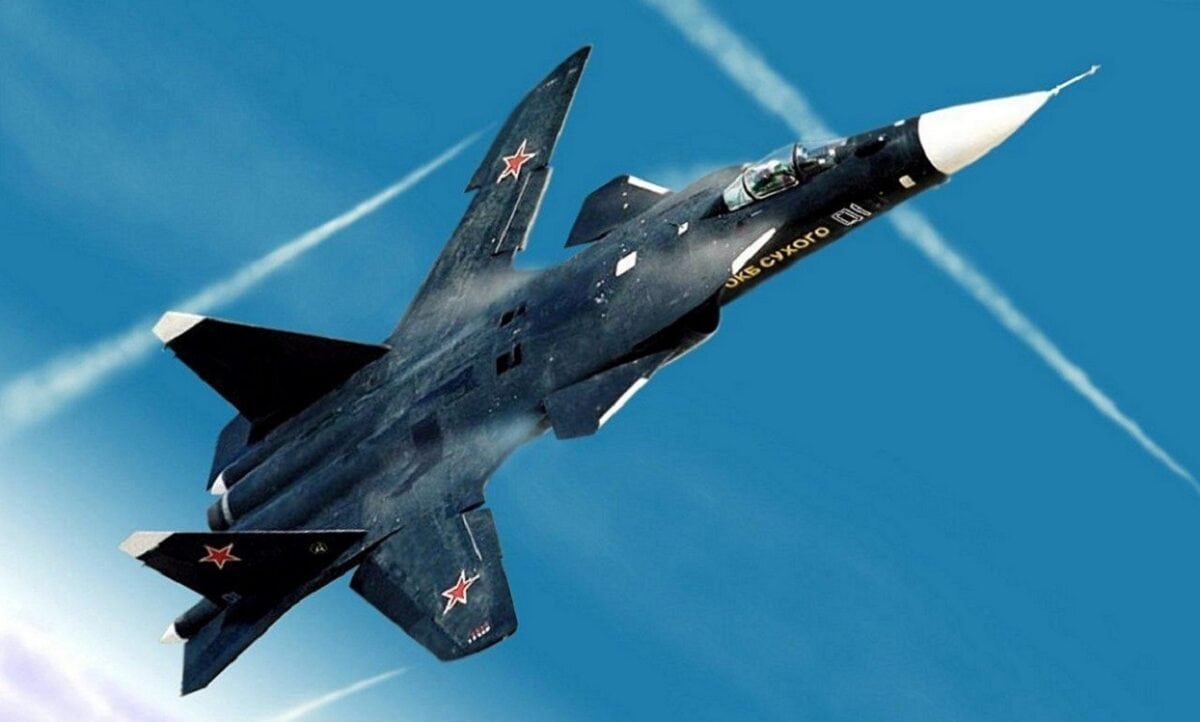The Su-47: Russia’s Failed Advanced Aircraft Developed Shortly After the Cold War – As one of the first prototype aircraft unveiled by Russia following the 1991 collapse of the Soviet Union, the Su-47 was a prime example of Russia’s defense industry at work, and all the inherent problems which come with it.
While the Su-47 Berkut (its Russian name which means “Golden Eagle”) undoubtedly contained many advanced systems, Russia’s sclerotic defense procurement and R&D systems chilled its development, which was already hampered by some of the design choices made by Russian engineers on the Su-47.
Due to these issues, the Su-47 Berkut most likely never reach mass production, or even a stage of development that would see more than one demonstration version be built.
Su-47: A History
Most of what we know about the Berkut is based on information allowed to leave Russia by the Russian government; therefore, most technical details should be taken with a grain of salt.
With a crew of one, the Su-47 is powered by twin Aviadvigatel D-30F6 turboshaft engines. These engines give the aircraft a range of roughly 1,150 miles and almost 1,400 miles per hour.
It also reportedly possessed 14 external hardpoints capable of being fitted with air-to-air and air-to-surface missiles.
While the Su-47’s designers hoped that the aircraft would be particularly stealthy, that seems like a failed aspiration at best. Its only stealth attributes likely were only a special stealth coating for radar evasion and an internal weapons bay, also a prerequisite to being a stealth aircraft, the combined effectiveness in practice of which is dubious.
However, the most experimental and distinctive element of the Su-47’s design and appearance was its swept-forward wings.
The Soviet armed forces were interested in developing a jet fighter with swept-forward wings that had high maneuverability at subsonic speeds and the ability to use shorter takeoff distances. However, this design choice also made the Berkut significantly more unstable in flight than any of its peers, forcing Russian engineers on the project to add a fly-by-wire system that would help keep the aircraft steady and on course.
Why Build the Su-47?
Initially designed in the 1980s as an answer to the development of the highly advanced American F-22 Raptor, the Su-47 Berkut began as a Soviet project of the late Cold War. After resources had begun to become scarce after the collapse of the Soviet Union, the first prototype of Russia’s Su-47 first flew in 1997, more than a decade after it entered development.
Further public appearances in 1999, 2001, 2003, and 2005 began to demonstrate that the Berkut had very strong turning performance and maneuverability, but was prone to quickly burning off its speed in such maneuvers. Such early tests also showed that extreme stress was placed on the composite-fiber wings of the aircraft in its maneuvers, which would likely make upkeep and maintenance costly and resource-intensive.
A Technology Tester
Instead of becoming a viable aircraft design as hoped by the Russian military, the Su-47 served as a means to test certain new technologies and techniques in the aftermath of the collapse of the Soviet Union.
Its design may have informed the development of Russia’s subsequent Su-57 multirole aircraft, which Russian military leaders hoped to make a similarly maneuverable aircraft.
Some elements of the Su-47 also appear to bear strong resemblance to the F-22, its original rival. In particular, the twin-engine layout and vertical tails of the Berkut visually appears to share the layout of the Raptor, even if the rest of the Su-47’s fuselage was likely borrowed heavily from Russia’s earlier Su-27.
Ultimately, only a single test example of the Berkut was ever produced and the Berkut was canceled as a project to eventually serially develop the fighter, with most of its use today coming from the value of the technologies which were tested in it.
Despite much of the buzz generated by the Su-47 early in its development, it is clear that the Su-47 failed to become the serially produced advanced fighter that Russia had hoped for.






